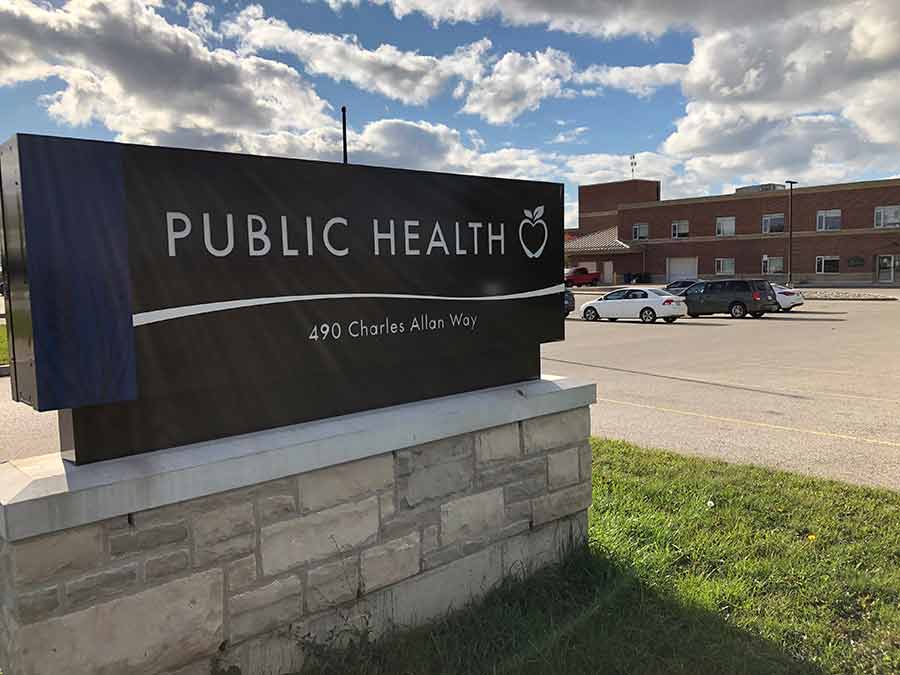WELLINGTON COUNTY – Wellington-Dufferin-Guelph Public Health (WDHPH) has agreed to provide more detailed information about the location of COVID-19 cases within the region.
Beginning Dec. 1, public health will provide the number of cases by municipality.
Currently, cases numbers are only broken down between Wellington County, Dufferin County and Guelph.
Concerns about privacy and “creating a false sense of security” are among the reasons offered by WDGPH for not providing municipality-specific data to this point.
Spokesperson Danny Williamson confirmed the move to offer more detailed information in an interview on Nov. 24.
“It’s been an ongoing process,” he said, acknowledging the media, local municipalities and many residents have been asking for case locations for months.
“Our health information team has been going through a process to see if this is something we can do.”
When it was pointed out other health units have been offering localized information for months, Williamson said he can not comment on what other regions are doing.
As late as Nov. 20, WDGPH officials were adamant that releasing information for each municipality presented privacy issues.
“Given how small some of the communities are in our region, there is a risk that someone’s privacy may be exposed as we get more granular with data,” stated WDGPH communications manager Chuck Ferguson in a Nov. 20 email.
Asked four days later about what appeared to be a sudden change of course, Williamson said the decision was neither made hastily, nor in response to any one request.
He said the WDGPH portal has been evolving since the outset of the pandemic and the latest update is part of an ongoing process to strike a balance between providing valuable information and protecting privacy.
“This is a process they’ve been working on for a while … it’s just ready now,” he told the Advertiser.
He added the WDGPH online “dashboard” may appear “fairly simple,” but it requires a lot of processing – both of the computer and human variety.
Minto request
At its Nov. 17 meeting, Minto council passed a resolution requesting that WDGPH share the community locations of positive COVID-19 tests in Wellington County.
Minto’s request followed inquiries from local residents and business leaders.
On Nov. 23, Minto Mayor George Bridge announced during an online update on the town’s Facebook page that public health had agreed to provide more specific data.
Figures posted on the Minto website indicated the town had six active cases and a total of 20 since the pandemic began.
Bridge said the town would be receiving the data again on Nov. 30.
After that, he said a breakdown for each municipality across the region would be provided on the dashboard on the WDGPH website.
“And that’s where I want it to be,” Bridge stated.
“I want people to keep going to the health unit site. I keep pushing that because it has a lot of good updates on it.”
Bridge said Medical Officer of Health Dr. Nicola Mercer advised him of the decision to provide more detailed information when he followed up on the town’s written request on Nov. 20.
However, Bridge cautioned local residents shouldn’t consider only the number of cases in their own municipality when assessing potential risks.
“We should look at anything in Wellington North, Mapleton and Minto … if its anywhere in those areas, that’s close to home, because we’re so interconnected in a lot of our jobs and where we work and everything else within that little 30-kilometre drive distance,” he stated.
Warden Kelly Linton reiterated the concern, expressed to him by Mercer, about putting too much emphasis on more localized data, fearing it “could inadvertently cause more complacency” in other areas.
He said lower tier mayors from across Wellington County have discussed with Mercer the benefit of understanding the location of COVID-19 “hot spots,” and he welcomed the decision to provide more detailed data.
“Having a better understanding of the problem areas will provide us with the opportunity to be a little more targeted in our joint education and enforcement activities,” Linton stated.
“We are all very aware that COVID transmission rates can change significantly in any area where people are exhibiting COVID-fatigue behaviour.”
Previous policy
Prior to Bridge’s announcement, public health officials had stated they provide only broad case data due to privacy issues and to avoid “a false sense of security” if residents see cases are low in their community.
“Just because a person lives in a certain area and is isolating and recovering there, doesn’t mean that area is the source of infection,” Ferguson stated on Nov. 20.
“They may have acquired COVID-19 when in another community working or visiting.
“Location of cases does not necessarily inform individuals where hot spots are.”
Because many people who contract COVID-19 are asymptomatic, Ferguson stated, “we all have to assume that it is circulating within our community and that each of us might be a risk to contract or spread the virus when we interact with others.”




